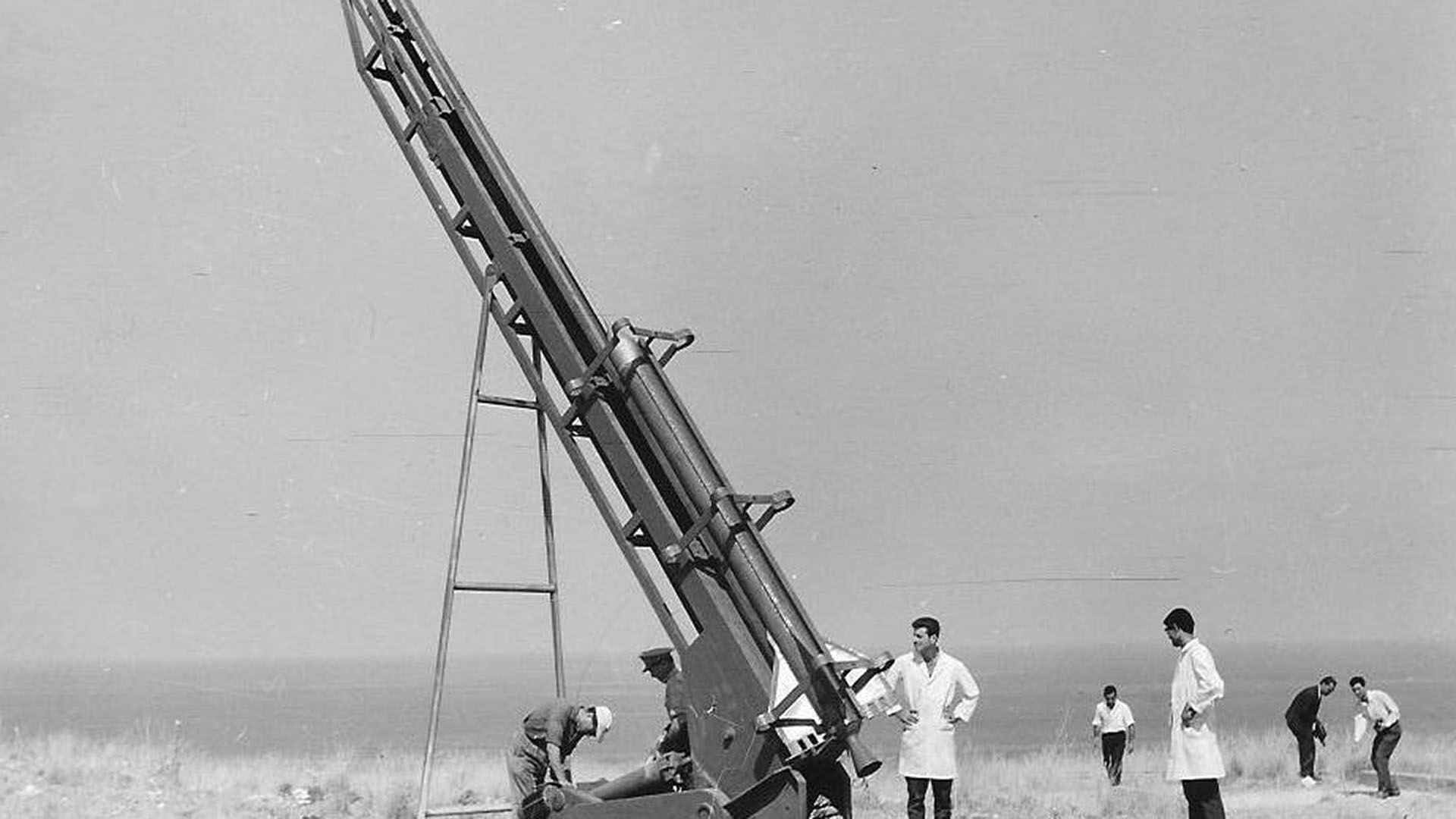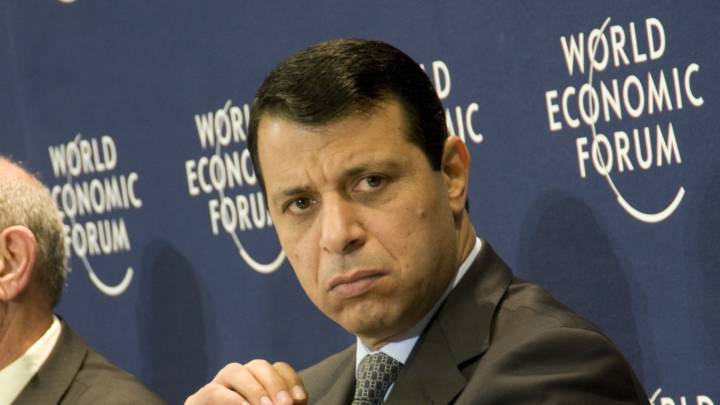A glimpse into Lebanon’s forgotten space programme – when the sky was no limit to Lebanese ambition.
Manoug Manougian’s first attempt to conquer space almost ended in failure. It was 1961, and on a hill in Ain Saade, a north-eastern suburb of Beirut, the 24-year-old physicist and a group of his students were testing rockets. Suddenly, as Manougian recalls, they encountered some technical difficulties: “The launcher of the first rocket failed to fly in the right direction. But after repairing it, the other two rockets flew as planned.” The three two-stage rockets, Cedar 2-A, Cedar 2-B and Cedar 2-C, were ultimately successfully launched. The latter reached about 10 miles.
Manougian - then a first-year university professor – had come close to realising his dream of sending a rocket into the great expanse of space from tiny Lebanon. Amid the turmoil of the time, this may have sounded like an impossible dream. But for the tech-savvy members of this Lebanese Rocket Club, the sixties marked the beginning of Lebanon’s own race to space.
It all began in Jerusalem. The conflict there between the Palestinians and the Israelis forced the young Manougian to remain at home. To escape reality, he turned to fantasy and science fiction. Soon flying carpets, magic lamps, and the adventures of Sindbad the Sailor, gave way to novels charting humankind’s race to the stars. The rip-roaring action contained within those pages inspired Manougian to embark on his own celestial journey.
When he graduated with honours from St. George School in Jerusalem, he chose a career in teaching. According to Manougian, teaching both physics and mathematics “were the perfect ingredients for sending rockets into space.”
“The students realised that learning about ballistics wasn’t necessarily for war and destruction, but rather for space science”
He was hired six years later by Haigazian University in Beirut to teach the two subjects. It was there that Manougian started an extra-curricular club of science enthusiasts. Their aim was to conduct research into the manufacturing of sub-orbital rockets.
Optimism was in the air. It was the early sixties. Internationally, the space race was in full swing and back in Lebanon, the 1958 crisis had just ended. Beirut was the epicentre of the entire region’s banking, commerce, and tourism sectors – a city where anything seemed possible. While Lebanon was hitting its peak, Manougian had even loftier ambitions.
“That was the perfect time to excite students about rocketry and space exploration. They realised that learning about ballistics wasn’t necessarily for war and destruction, but rather for space science.”
With an initial budget of only 750 Lebanese pounds – around $96 in today’s money – the Haigazian College Rocket Society (HCRS) began to produce what Manougian terms “tiny baby rockets,” each no longer than half a metre.
What the HCRS lacked in funds, Manougian recalls, it made up for with enthusiasm: “The students proved very eager to learn and spend the time necessary to do so.” One of those students, Garo Basmadjian, remembers the club fondly: “We learned a lot from Manougian – all about rocketry – we really enjoyed it. I had a background in chemistry, so I helped choose and mix the rocket fuels.”
While the USA and the USSR were trying to outdo one another, little attention was paid to the small Arab country’s attempts to reach the stars.
Without access to a suitable laboratory, the HCRS used a mountainous piece of land belonging to the family of Hrair Keleshian, one of the club’s members, to test possible propellant. After discovering the right blend of chemicals to use, three rockets were designed, built, and tested. They were the first of more than ten space rockets that the club successfully made during a seven-year period – each one bearing the name of Lebanon’s emblematic tree, “Cedar”.
The feats of Manougian and the HCRS, including launching a rocket 600km into space, did not go unnoticed. They received an invitation from then-president Fuad Chehab, who later allocated funds to the project. Perhaps unsurprisingly, the Lebanese Army also took an interest in HCRS’ activities. The military was initially sceptical, telling the club to relocate their launch site to a different part of the mountain for safety reasons. But later, Joseph Wehbe, an army captain, joined the HCRS providing the club with access to a military workshop and a permanent launch site in the coastal city of Dbayeh.
Manougian quickly became good friends with Wehbe: “In 1962, together we designed Cedar 3 and 4. These were 3-stage rockets built for Lebanese Independence Day; one on 21 November 1962, and one for 21 November 1963.” By then, the HCRS had become the Lebanese Rocket Society (LRS).
While the USA and the USSR were trying to outdo one another, little attention was paid to the small Arab country’s attempts to reach the stars. Mohamad Abbas, an astronomer based at New York University Abu Dhabi, believes that Lebanon would have ventured even further if the space programme had not been cut short prematurely: “Their results were beyond impressive. Especially considering that all this was done without any external support, by personal efforts alone.”
The programme ended in 1964, following the launch of Cedar 8, a two-stage rocket which managed to cross the Kármán line.
Unfortunately, it was not meant to be. The programme ended in 1964, following the launch of Cedar 8, a two-stage rocket which managed to cross the Kármán line, the frontier between Earth’s atmosphere and outer space.
As Lebanon’s skyward ambitions waned, so too did Manougian’s desire to remain in the country. The military did not share his vision of the project: “They were eager to weaponize the rockets. I hate killing and wars. I was totally against it.” With the Lebanese Civil War approaching, he took the opportunity to leave to pursue a doctorate at the University of Texas.
Manougian’s departure seemed to consign the LRS to obscurity. With the club’s archive material lost, that is the way it had stayed for decades until filmmakers Joana Hadjithomas and Khalil Joreige released a documentary in 2013, entitled “The Lebanese Rocket Society.” Even today the film is thought-provoking. As contemporary Lebanon faces economic ruin, it seems to capture the spirit of a lost age when the Lebanese dared to aim for the sky.
Manoughian, at least, believes that the spirit still lingers on: “Lebanon has a wide range of highly educated people. I see no reason why Lebanon cannot blossom again.” Today, he is once more involved in a space enthusiasts’ club, this time at the University of South Florida where he teaches. Once the coronavirus pandemic subsides, members of his new club, the Society of Aeronautics and Rocketry (SOAR), will participate in the Base 11 Space Challenge alongside students from across North America. The competition involves developing a single-stage, liquid-propelled rocket that will cross the Kármán line. “It’ll be challenging!” - says the man who once attempted to send Lebanon into space.
Ryme Alhussayni is a Beirut based journalist, editor and television presenter, whose work has featured in An-Nahar. She also conducts research for the Samir Kassir Foundation, and the UN Entity for Gender Equality and the Empowerment of Women.
The content published on the Lebanon Chronicles channel is supported by the Konrad-Adenauer-Stiftung (KAS). The views expressed in these articles are those of the respective authors and do not necessarily reflect those of the KAS.






